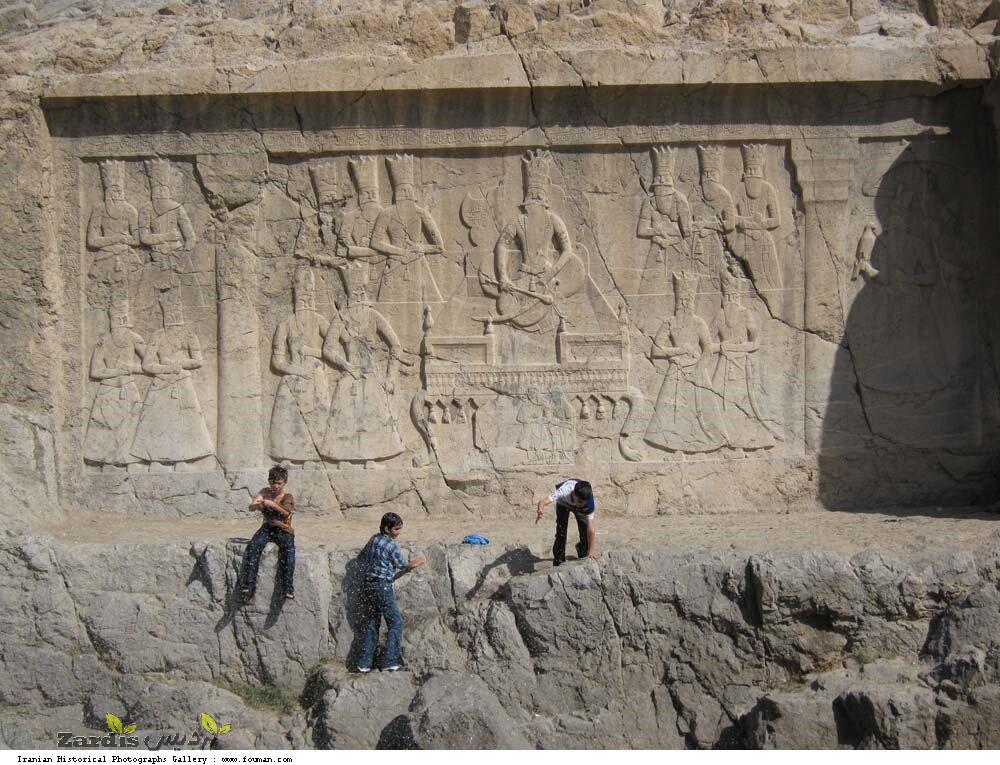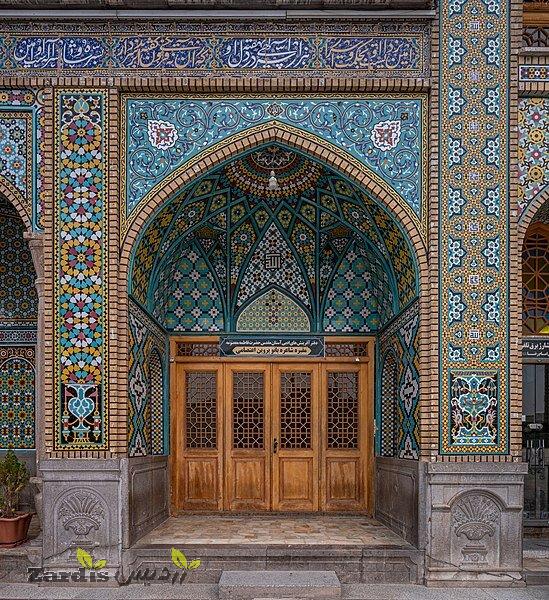TEHRAN – A team of cultural heritage experts has cleaned the well-known 19th-century bas-relief, which is carved on a rock face in Cheshmeh-Ali, southern Tehran.
A restoration operation has been completed on the Qajar-era relief of Cheshmeh Ali, which had recently been damaged in an act of vandalism by an individual (or individuals), throwing hair dye and chemicals at the artwork, IRNA reported on Wednesday.
The historical, cultural, and recreational site of Cheshmeh-Ali, literally meaning Spring of Ali, embraces an underground mineral stream that pours into an open-air pool that has long been a destination for sightseers and a recreational center for the locals. During the summertime, the site is occupied by hundreds of locals who came for swimming and having fun.
Cheshmeh-Ali is in the neighborhood of the ancient Ebn-e Babveyh cemetery, the 12th-century Tughrul Tower, the historical Rashkan Castle, and next to the aged Rey Castle. Another attraction of the site is a 19th-century rock-carved relief that overlooks the pool. The artwork was commissioned by the Qajar king Fath Ali Shah who reigned from 1797 to 1834. Cheshmeh Ali also contains an archaeological site estimated to date from the 4 millennium BC.
Rey was one of the capital cities of the Parthian empire (3rd century BC–3rd century CE) and it was captured by the Muslim Arabs in 641 CE. During the reign of the Muslim caliph al-Mahdi in the 8th century, the city grew in importance until it was rivaled in western Asia only by Damascus and Baghdad.
AFM
Zardis news | The latest news of Iran and the world
تمامی حقوق مطالب برای "Zardis news"محفوظ است و هرگونه کپی برداری بدون ذکر منبع ممنوع می باشد.
طبق ماده 12 فصل سوم قانون جرائم رایانه ای کپی برداری از قالب و محتوا پیگرد قانونی خواهد داشت.







